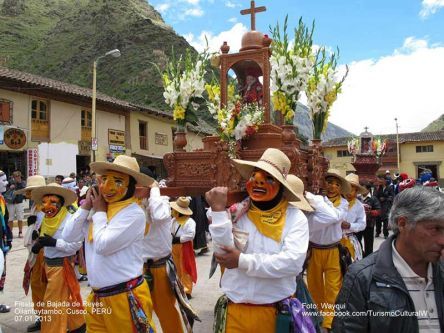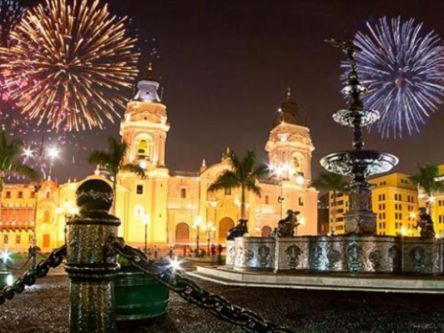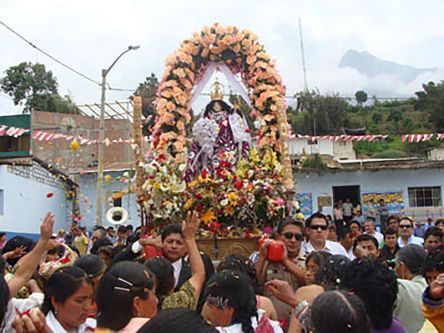- Peru Guide
- Peruvian Visa Types
- Public Holidays & Festivals
- Peru Info
- Culture & Entertainment
- Legal Stuff
- Customs Regulations & Info
- How many days did I get?
- Tourist Visa extension in Peru
- Peruvian Overstay Fine
- International Document for Antecedentes Peru
- Paying Administration Charges
- Permit to Sign Contracts
- Interpol - Ficha de Canje
- Travel Permit
- Subsanacion - Submitting documents
- Extending a Migraciones deadline
- Residence visa extension
- Renewal Carné de Extranjería
- Update Migraciones information
- Carné replacement
- Marrying in Peru
- Driver's License in Peru
- Police Clearance Certificate Peru
- Travel Authorization for Minors
- Finding a Job in Peru
- Domestic Workers in Peru
- Labor Regulations Peru
- Air Passenger Rights
- Safety, Security & Travel Advice
- Shopping in Peru
- Stay Connected
- Business Guide
- Earthquakes
- Emergencies & Help
- History of Peru
- Education, Teaching & Schooling
- Glossary of Terms
- Lima Guide
- Travel & Sights
- Food
- Money
- Events
- Opinion
- Media
- Peru Guide
- Peruvian Visa Types
- Public Holidays & Festivals
- Peru Info
- Culture & Entertainment
- Legal Stuff
- Customs Regulations & Info
- How many days did I get?
- Tourist Visa extension in Peru
- Peruvian Overstay Fine
- International Document for Antecedentes Peru
- Paying Administration Charges
- Permit to Sign Contracts
- Interpol - Ficha de Canje
- Travel Permit
- Subsanacion - Submitting documents
- Extending a Migraciones deadline
- Residence visa extension
- Renewal Carné de Extranjería
- Update Migraciones information
- Carné replacement
- Marrying in Peru
- Driver's License in Peru
- Police Clearance Certificate Peru
- Travel Authorization for Minors
- Finding a Job in Peru
- Domestic Workers in Peru
- Labor Regulations Peru
- Air Passenger Rights
- Safety, Security & Travel Advice
- Shopping in Peru
- Stay Connected
- Business Guide
- Earthquakes
- Emergencies & Help
- History of Peru
- Education, Teaching & Schooling
- Glossary of Terms
- Lima Guide
- Travel & Sights
- Food
- Starter & Appetizer
- Sandwiches
- Soups
- Main Courses
- Salsas, Sauces & Dips
- Desserts
- Snacks
- Drinks & Beverages
- Peruvian Cheese
- Fruits
- Vegetables
- Aji - Chili Peppers
- Grains, Coffee, Beans & Nuts
- Common Herbs
- Other Ingredients
- Money
- Peru Guide
- Peruvian Visa Types
- Public Holidays & Festivals
- Peru Info
- Culture & Entertainment
- Legal Stuff
- Customs Regulations & Info
- How many days did I get?
- Tourist Visa extension in Peru
- Peruvian Overstay Fine
- International Document for Antecedentes Peru
- Paying Administration Charges
- Permit to Sign Contracts
- Interpol - Ficha de Canje
- Travel Permit
- Subsanacion - Submitting documents
- Extending a Migraciones deadline
- Residence visa extension
- Renewal Carné de Extranjería
- Update Migraciones information
- Carné replacement
- Marrying in Peru
- Driver's License in Peru
- Police Clearance Certificate Peru
- Travel Authorization for Minors
- Finding a Job in Peru
- Domestic Workers in Peru
- Labor Regulations Peru
- Air Passenger Rights
- Safety, Security & Travel Advice
- Shopping in Peru
- Stay Connected
- Business Guide
- Earthquakes
- Emergencies & Help
- History of Peru
- Education, Teaching & Schooling
- Glossary of Terms
- Lima Guide
- Travel & Sights
- Food
- Starter & Appetizer
- Sandwiches
- Soups
- Main Courses
- Salsas, Sauces & Dips
- Desserts
- Snacks
- Drinks & Beverages
- Peruvian Cheese
- Fruits
- Vegetables
- Aji - Chili Peppers
- Grains, Coffee, Beans & Nuts
- Common Herbs
- Other Ingredients
- Money
There are no articles in this category. If subcategories display on this page, they may have articles.
Subcategories
Current Peruvian Banknotes & Coins
Since 1991, the Peruvian currency is the “Nuevo Sol” (S/.), which was renamed to just “Sol” (S/) in 2016. It’s subdivided into 100 centimos (cents). Issued by the Peruvian Central Reserve Bank (BCRP) the current banknotes and coins of Peru are not only a reflection of the country's historical and cultural past and Peru’s abundance of natural wealth decorated with famous Peruvian personalities, amazing archaeological sites, natural resources and highlights of the vast flora and fauna typical of the country, but are also highly sophisticated and have top-notch security features.
So, scroll through the next pages which introduce you to Peru's lovely current banknotes and coins.
Banks, Banking & Financial Institutions
In Lima you find banks nearly at every corner. But finding a reliable bank is as difficult as in any other city around the world. Being here only on holidays, you might not need a bank at all. For changing money you should better use exchange offices anyway and for drawing cash use ATM's that are placed all over the city. If you are a customer of an international bank that is present in Peru you should preferably use their ATM's. That way you can most probably save the sometimes quite high fees for international withdrawals. Check with your bank at home what charges you have to expect before you leave!
Opening an account is easy when you are a Peruvian resident. As far as we could find out, most banks have tightened their policies in the last years and don't allow tourists to open an account anymore. But as usual here the exception proves the rule. If you can open an account, be aware that banks in Peru charge literally for everything and sometimes their service leaves a lot to be desired. So check with the different banks on what they offer, so you can determine which one meets your needs the best. Bank debit cards and online banking are standard. Compare rates and take care of hidden charges!
Listed below are only a few of the bigger national and international banks with some of their agencies. For more info please check their websites, but unfortunately most of them are only available in Spanish.
Old Peruvian Banknotes
Local private banks introduced the first banknotes in Peru around 1864. These Peruvian banknotes (issued between 1864 and 1922) used currency names like Soles, Pesos, Incas and Libras. There was no unified monetary system for the country until 1926, when the Central Reserve Bank of Peru (Banco Central de Reserva del Peru) started issuing paper money.
Peru had since 1897 five main monetary systems. The first one was the Libra Peruana de Oro (Peruvian Gold Pound) that was in circulation as legal tender from 1897. In 1930 followed a new currency called the Sol de Oro (Golden Sun). Because of high inflation, the currency of the era of Republican Peru was abandoned in 1985 and the Inti introduced. The bad economic state of Peru and terrorism in the late 1980s, the Inti lost its value quickly. Hyperinflation struck the country, and the Peruvian government was forced to introduce a new currency in 1991: the Nuevo Sol (New Sun). They introduced the Nuevo Sol at a rate of 1 Nuevo Sol = 1,000,000 Intis. The return to this name was considered appropriate as it could be derived from historical use and divination of the sun as a symbol of power and as a way of connecting the new currency to the old Inti, which was named after Inti, the Sun God of the Incas. On the 15th of December 2015, they changed the name of the Peruvian currency to "Sol" (Sun).
Today you can still buy old Libras, Intis and Sol bills, especially in the small shops behind the main post office in Limas City Center. These bills aren't fake, but keep in mind that they are not legal tender. You can't exchange them or buy anything with them, even if you are told otherwise!
Old Peruvian Coins
Using official coins in Lima and Peru can be traced back to the year 1566. Since the foundation of Lima by Francisco Pizarro in 1535, it was very difficult to execute commercial transactions with no established monetary system. At that time silver and gold bars were used for large transactions, but these were not efficient for small businesses and operations. A variety of coin shaped objects filled the gap with differences in weight, nomination and metals used that caused very chaotic conditions. The Spanish Crown realized the importance of coinage in the colonies and by request of the viceroy of Peru, Diego López de Zúñiga in 1561 the authorization to establish a mint was granted.
The creation of the National Mint was finally started on the 21st of August 1565 by royal decree of Philip II, but it took until 1568 that the operation started in the "Cajas Reales" a building on the corner of what is today the Government Palace (Main Square in the Lima City Center). The most important role of the Lima Mint was to organize and standardize the previous emission, circulation and use of other unlawful coins guaranteeing the political and economic stability of the newly established Vice-royalty.
Most of the coins in this listing are no legal tender anymore and are considered collector's items.
Peru Newsflash
Los 3 Patas del Peru
Marca Perú, the official country brand that promotes Peru’s identity, culture, and heritage at home and…Victorinox launches third Peru-themed pocketknife collection
The renowned Swiss company Victorinox, famous worldwide for its high-quality and extremely functional…Lima’s New Airport Terminal to open in June
After many delays, the new terminal of Lima’s Jorge Chavez International Airport is finally operational. On…New lizard species discovered in Peru
There is still so much new to find out about and see in Peru. Just recently Peruvian scientists discovered a…
Peru Event Calendar
Mon Tue Wed Thu Fri Sat Sun 1234578910111213141516171920Date : Tuesday, 20 January 20262122232425262728293031Upcoming Events in Peru
18Jan07Feb14Feb19MarMore in the Peru Event & Entertainment Calendar
Latest Content...
- Laws, Norms, Legal Codes & Decrees
New Peruvian Nationality Law (August 2025)
- Tourist Attractions & Sights in Peru
Machu Picchu
- International Schools in Peru
International Christian School of Lima - ICS Lima
- Peruvian Visa Types
Peruvian Digital Nomad Visa
- Laws, Norms, Legal Codes & Decrees
Legislative Decree No. 1582 (Modification of the Peruvian Foreigner Law, Nov 2023)
- Peruvian Cheese
Queso Rojo de Lluta
- Peruvian Cheese
Peruvian Queso Andino
- Peruvian Cheese
Peruvian Quesillo
- Peruvian Cheese
Peruvian Queso Mantecoso
- Peruvian Cheese
Peruvian Queso Paria
- Peruvian Cheese
Peruvian Queso Fresco
- Legal Stuff
Extension of a Migraciones deadline
- Legal Stuff
Subsanacion - Submitting documents
- Legal Stuff
Replacement for a lost, stolen or damaged carné
Latest Video
Long Reads...
- Peruvian Archaeology
The Mystery of the Nazca Lines in Peru
In the 1920s, when people first flew across southern Peru, they made an astonishing discovery. Stretching below them,… - Peruvian Personalities & Founders
Francisco Pizarro González (1474-1541)
Francisco Pizarro, a peasant from Spain, was one of the least well-equipped conquerors in history. However, in the name… - Peruvian Archaeology
The colorful Fabrics and Textiles of Peru
Europe’s first knowledge of Peruvian textiles was acquired following the Spanish invasion of Peru in 1532, when the… - Peruvian Legends, Myths & Tales
The Jeweled Frog and the Condor
By a quiet pond, at the side of a cloud-topped mountain in Peru, lived a small green frog and his large green family.… - Peru Info
Peruvian Economy
The Peruvian economy is an emerging, social market economy highly dependent on foreign trade and classified as an upper…
Contact us | Editorial Ethics | Support | T&C | Copyright | Privacy | Discussions & Submissions | Cookies Policy | GDPR | CCPA | DMCA





























